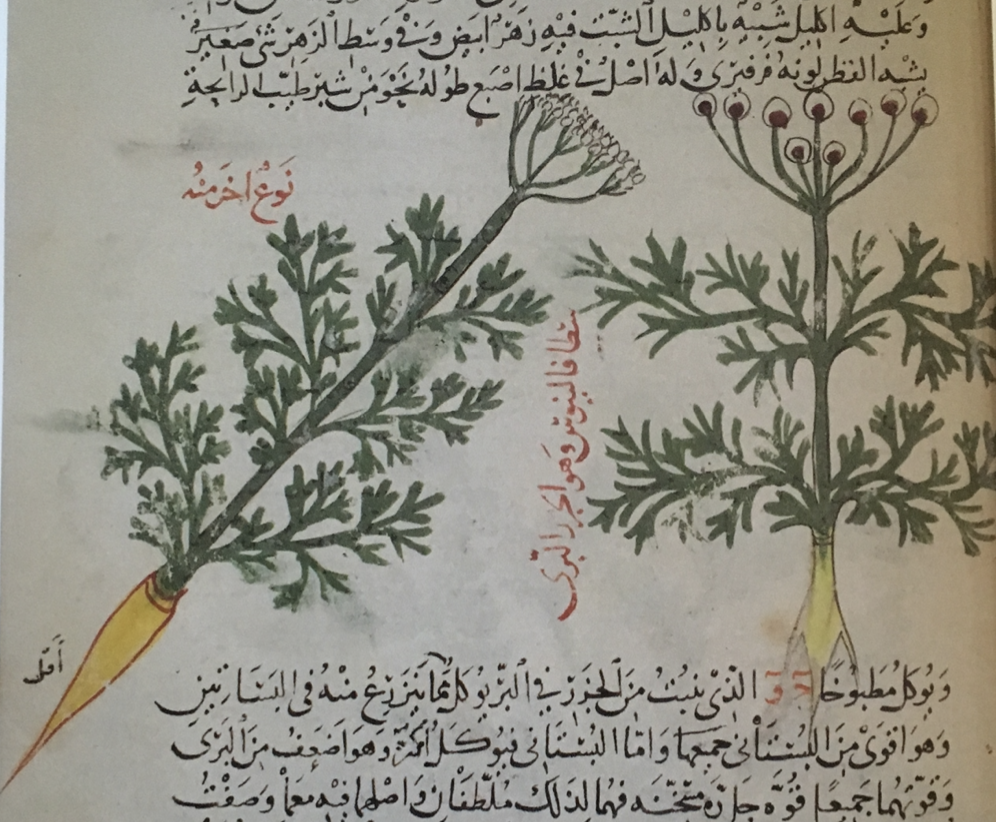The oldest textual source mentioning carrots (Daucus carota L.) goes back to the 8th century BCE in a list of plants grown in the royal gardens of Babylon. Known in Arabic as jazar (جزر < Persian gazar) or aṣṭūfūlin (أصطوفولين < Greek staphylinos), it came in three varieties: red(-purple), yellow and white. The (white) wild one (barrī) – as opposed to the (red) cultivated (bustānī) — was known as dūqū (دوقو < Greek daukos, ‘carrot’). Maimonides claimed that in certain countries shaqāqil (a variant of shaqāqul, ‘wild parsnip’) denoted the wild carrot. Both of these were very different, however, from the modern culinary carrot. .
The Arabs introduced the carrot in the Eastern Mediterranean in the 8th century, and some time later in Muslim Spain, where the 12th-century Andalusian agronomer, Ibn al-‘Awwam describes a juicy flavoursome red variety, and a coarse, less tasty yellow and green variety. He said that they were eaten dressed with oil and vinegar, or with vegetables. It was also the Arabs who probably started eating the root, rather than merely the seeds and leaves, as the Greeks did.
In the medieval Arab culinary tradition, carrots were eaten both raw and cooked, in stews, sweets (such as a carrot khabis), preserves, and even drinks. In what is considered the oldest cookbook, a carrot drink to heat the kidneys, as well as stimulate coitus involved cooking sliced carrots in water, and then mixing the strained off water with honey, mace and nutmeg. Yummy!
Ibn Buṭlān recommended the red sweet winter-harvested variety, whereas Ibn Sīnā likened the cultivated carrot to Greek celery (karafs rūmī), stating that it “is sharply pungent and fragrant.” In the medical tradition, carrots were said to be hot in the highest degree and moist in the second. They were recommended against kidney pains, palpitations, coughs, and as a diuretic. The wild variety, in particular, was considered a powerful sexual stimulant (with enhanced effect when pickled in vinegar). Conversely, al- Kindī prescribed them as a cure for sexual addiction.
On the down side, carrots were said to be very difficult to digest and to generate bad blood, which ill effects could be counteracted by murrī, vinegar and mustard. Ibn Buṭlān recommended its use for those who have cold and moist temperaments and are middle aged. Ibn Sīnā said that the root of cultivated carrot is flatulent and bloating. Interestingly enough, the seeds could be used to remedy flatulence, while carrot jam is easily digested.

